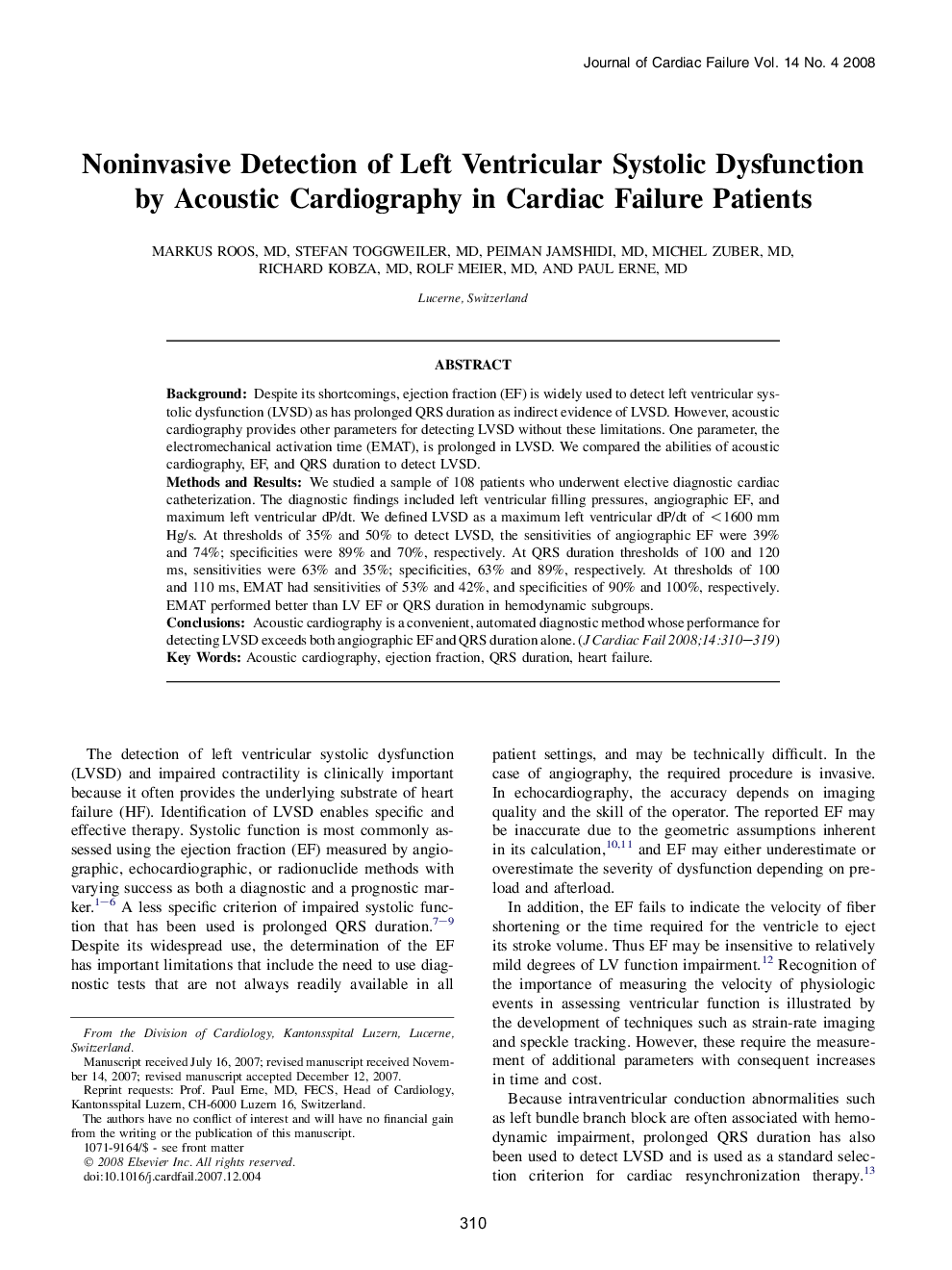| Article ID | Journal | Published Year | Pages | File Type |
|---|---|---|---|---|
| 2962442 | Journal of Cardiac Failure | 2008 | 10 Pages |
BackgroundDespite its shortcomings, ejection fraction (EF) is widely used to detect left ventricular systolic dysfunction (LVSD) as has prolonged QRS duration as indirect evidence of LVSD. However, acoustic cardiography provides other parameters for detecting LVSD without these limitations. One parameter, the electromechanical activation time (EMAT), is prolonged in LVSD. We compared the abilities of acoustic cardiography, EF, and QRS duration to detect LVSD.Methods and ResultsWe studied a sample of 108 patients who underwent elective diagnostic cardiac catheterization. The diagnostic findings included left ventricular filling pressures, angiographic EF, and maximum left ventricular dP/dt. We defined LVSD as a maximum left ventricular dP/dt of <1600 mm Hg/s. At thresholds of 35% and 50% to detect LVSD, the sensitivities of angiographic EF were 39% and 74%; specificities were 89% and 70%, respectively. At QRS duration thresholds of 100 and 120 ms, sensitivities were 63% and 35%; specificities, 63% and 89%, respectively. At thresholds of 100 and 110 ms, EMAT had sensitivities of 53% and 42%, and specificities of 90% and 100%, respectively. EMAT performed better than LV EF or QRS duration in hemodynamic subgroups.ConclusionsAcoustic cardiography is a convenient, automated diagnostic method whose performance for detecting LVSD exceeds both angiographic EF and QRS duration alone.
